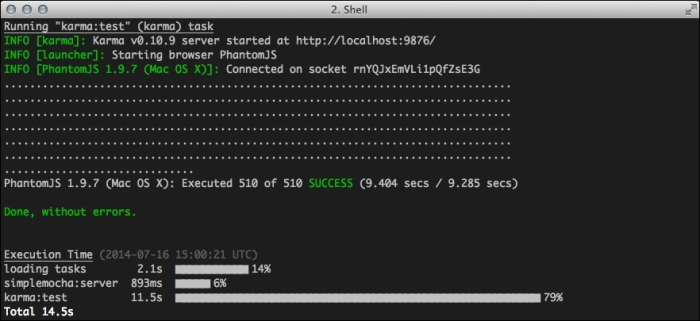The development of a sophisticated frontend application is no different than any other software application. The code is going to be complicated and robust, and there's no reason not to write tests as well as practice test-driven development. The availability of testing frameworks and languages for the frontend is just as robust as any other language. All of the tools and concepts we've used for testing the Node.js code that we've written in this book can be used directly on the frontend as well.
Some other tools to consider for testing your frontend JavaScript are:
- Karma for running tests: http://karma-runner.github.io
- Jasmine for writing tests: http://jasmine.github.io
One thing I'd like to point out with testing frontend code is that typically the test runners want to run in a browser window. This is great and makes perfect sense, but in the real world, automating your tests or quickly executing them with TDD can be a bit painful when a browser window wants to open every time your test suite runs. PhantomJS is a headless browser available that works perfectly in this kind of scenario. A headless browser simply means it's a browser that runs from the command line, in memory, with no actual interface (like a typical browser).
You can easily configure Karma to launch the test suite using PhantomJS instead of your browser of choice. When using PhantomJS as your browser, your tests execute behind the scenes and only errors are reported. Here is a sample output of a test suite running with Karma using PhantomJS:

